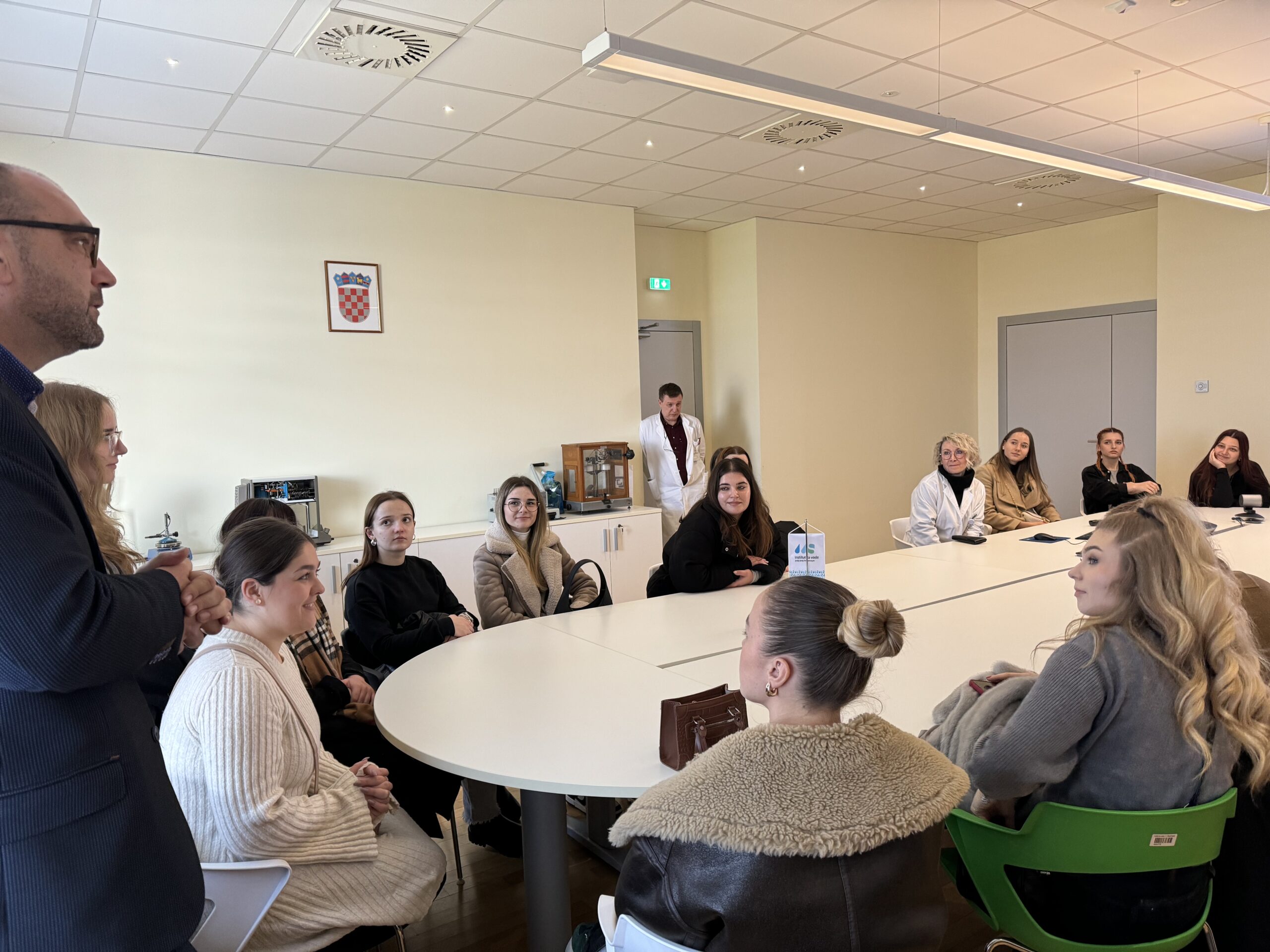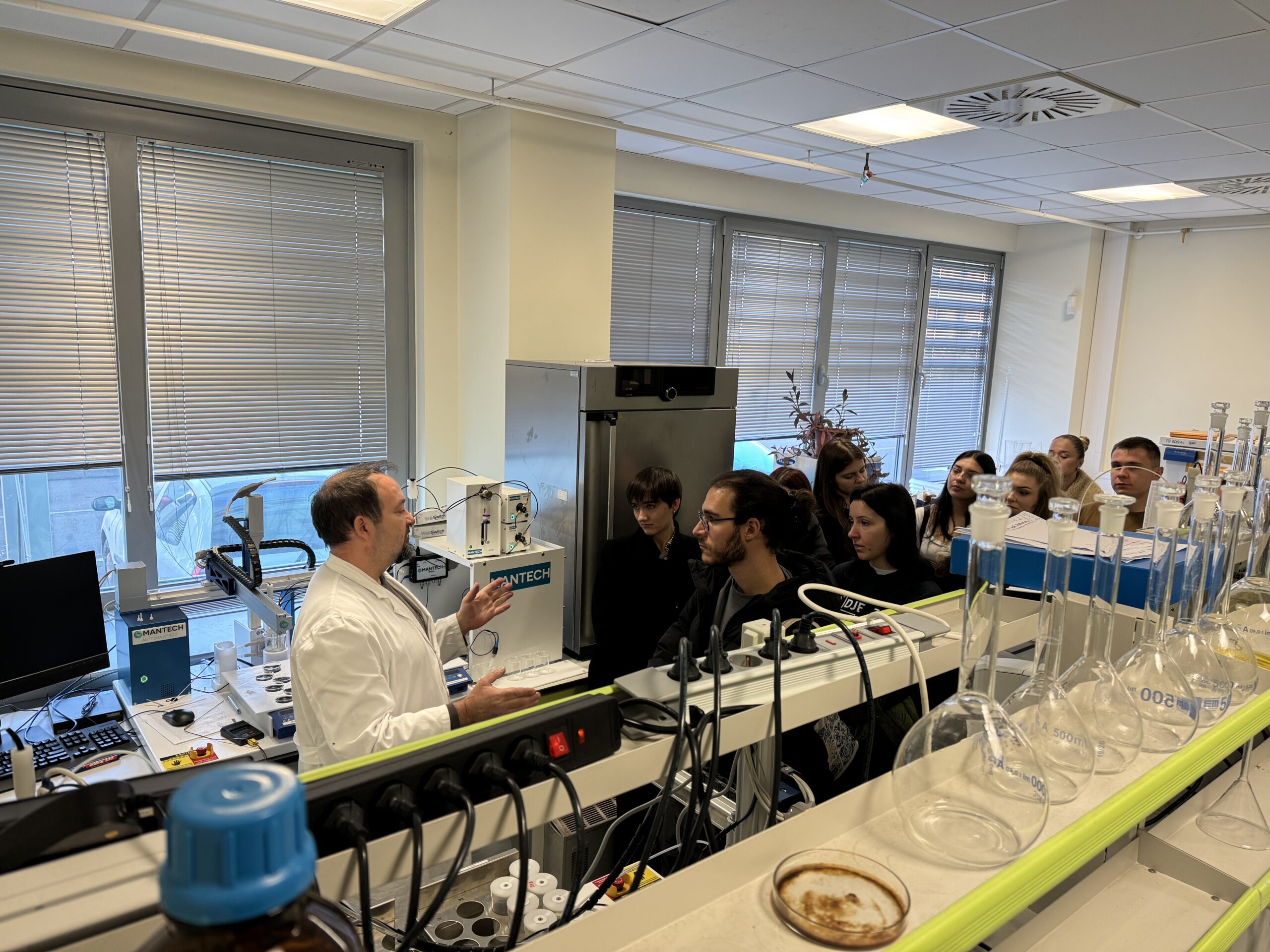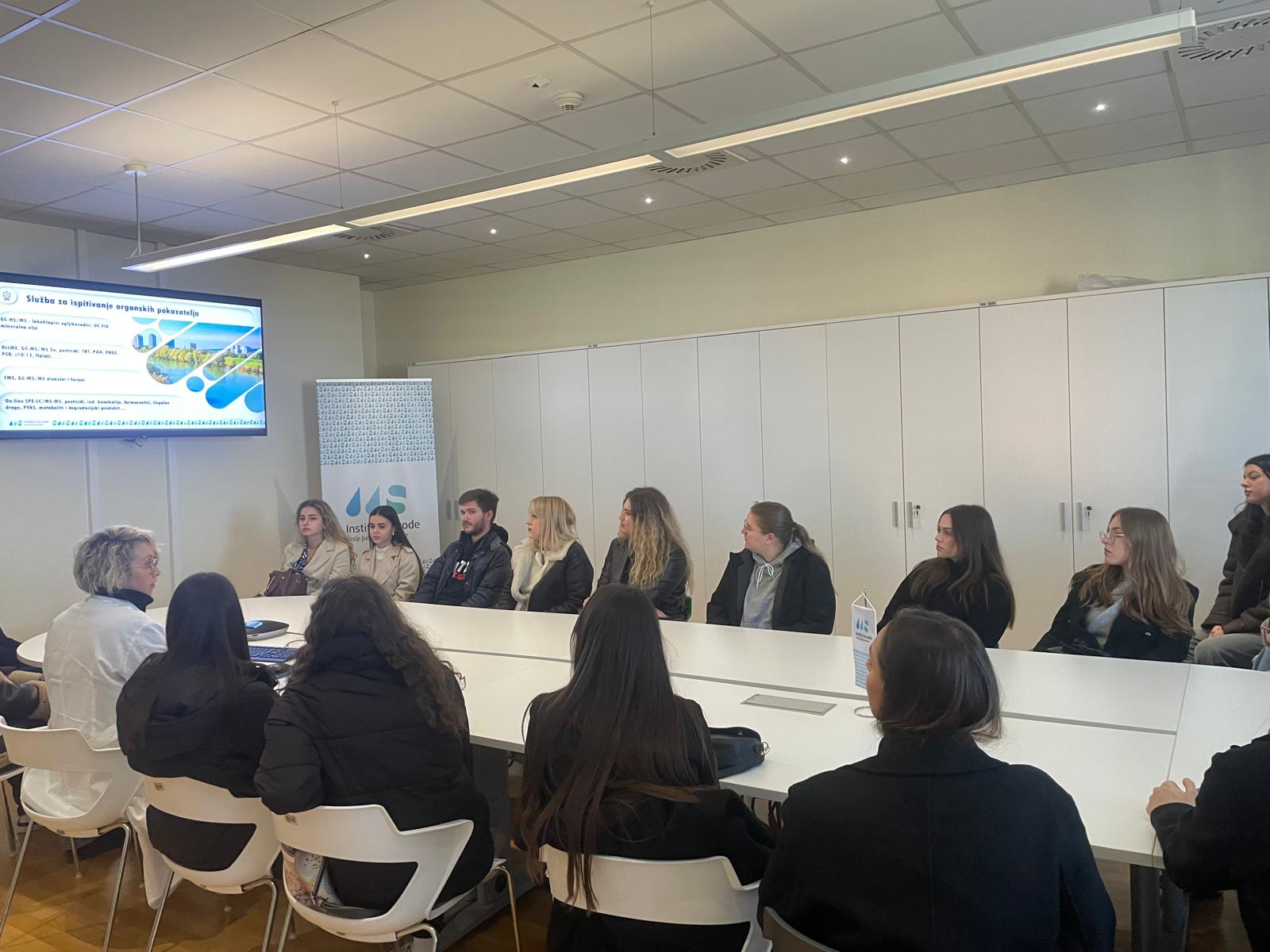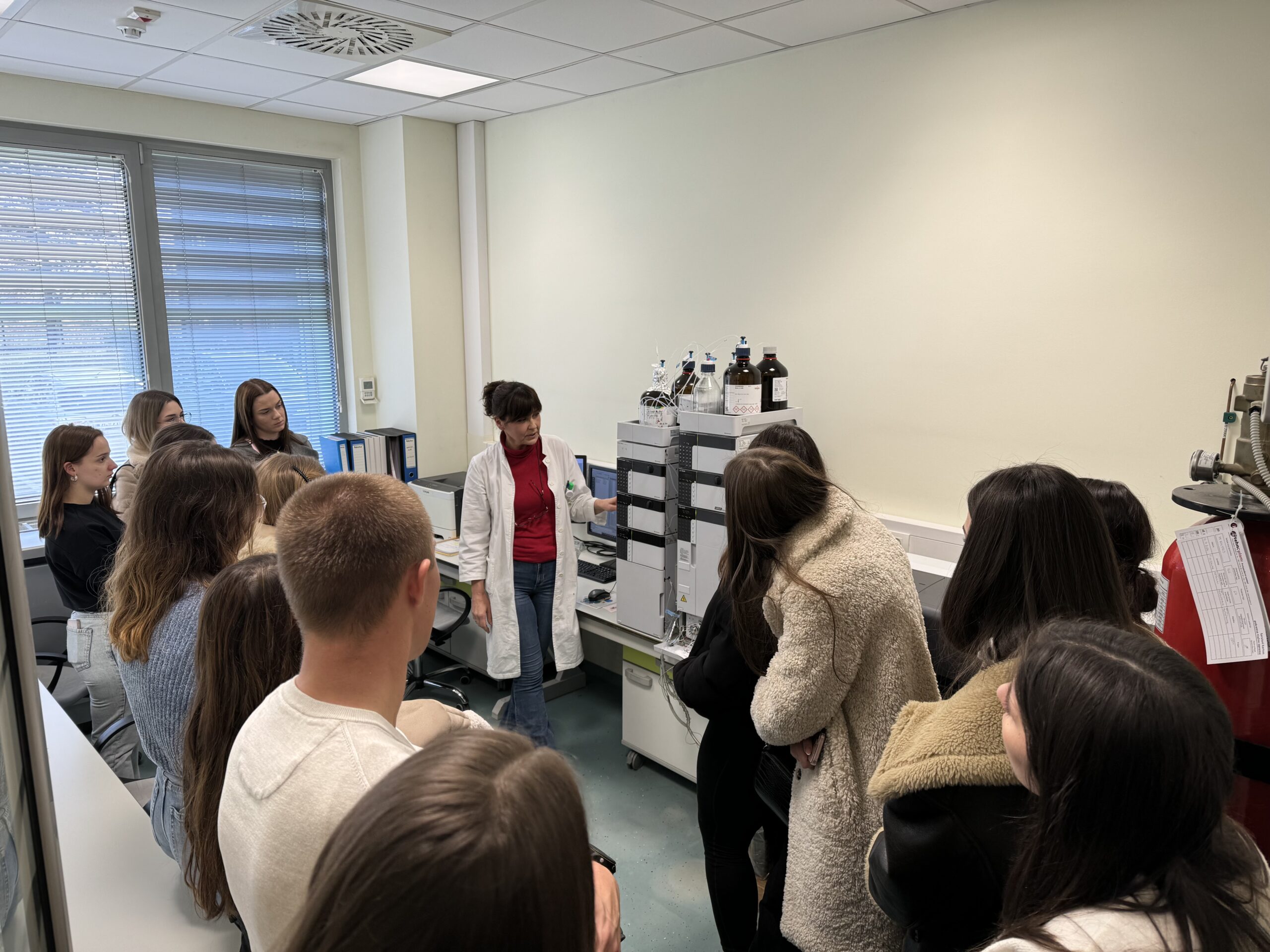Students from the University of Osijek visit the Institute’s Main Water Laboratory
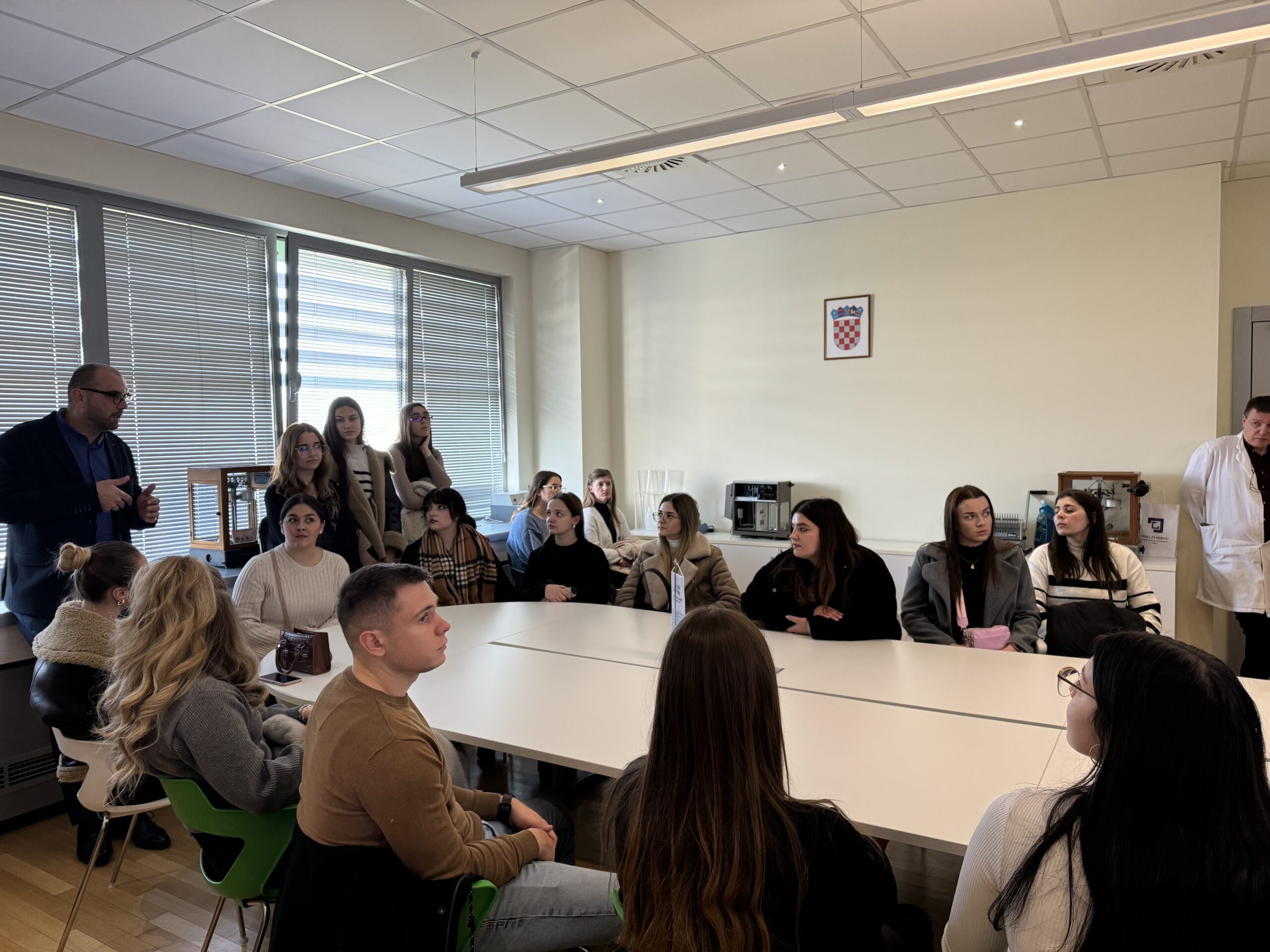

On the basis of an agreement with the Josip Juraj Strossmayer University of Osijek, a visit to the main laboratory of the Department of Chemistry to the Main Water Laboratory of the “Josip Juraj Strossmayer” Water Institute. The students were welcomed by the Director, Associate Professor Dr sc. Mario Šiljeg, who informed them about the importance of the Institute’s activities and emphasised that accurate, timely and complete information on the state of water bodies is a necessary prerequisite for the effective management of water resources in the Republic of Croatia. In particular, he addressed the problem of arsenic removal in the water of Osijek-Baranja County. The naturally occurring elevated concentration of this metal has been permanently eliminated by the construction of a two-stage filtration plant, which was financed with EU funds. The director concluded this important and optimistic example with the thought that Croatian ingenuity and European funds can significantly improve water management, thus motivating the students not only for their future work, but also for the importance of their future careers.
The presentation by Dr Draženka Stipaničev, head of the Main Water Laboratory, gave the students a comprehensive insight into the Institute’s activities. Dr Draženka Stipaničev explained the basics of systematic monitoring of water quality in aquatic habitats. She pointed out the chemical compounds that threaten water quality, such as heavy metals and pesticides. She also pointed out that the Main Water Laboratory of the “Josip Juraj Strossmayer” Water Institute is involved in supplementing the national regulations and cooperates with other authorised laboratories, universities and scientific research institutions.
The students of the Josip Juraj Strossmayer University were then given a tour of the laboratory to familiarise themselves with the working methodology. They had the opportunity to familiarise themselves with classic titrimetric methods for determining the chemical oxygen demand through to highly developed methods for determining ions and glyphosate using ion chromatography as well as the inductively coupled plasma method for metals.
In addition, the students had the opportunity to familiarise themselves with the methods and equipment used to analyse organic compounds, in particular the methods of liquid and gas chromatography and the innovative technique of dispersive liquid-liquid microextraction (DLLME) in combination with gas chromatography in conjunction with mass spectrometry. This useful method was developed in the Main Water Laboratory of the “Josip Juraj Strossmayer” Water Institute and has enabled exceptionally sensitive methods for the determination of harmful compounds such as pesticides and flame retardants.
